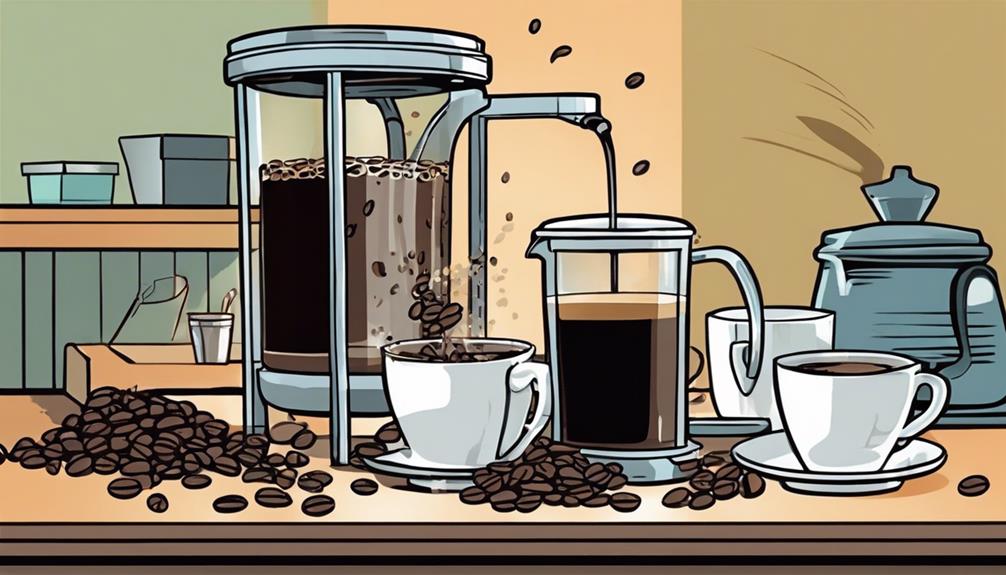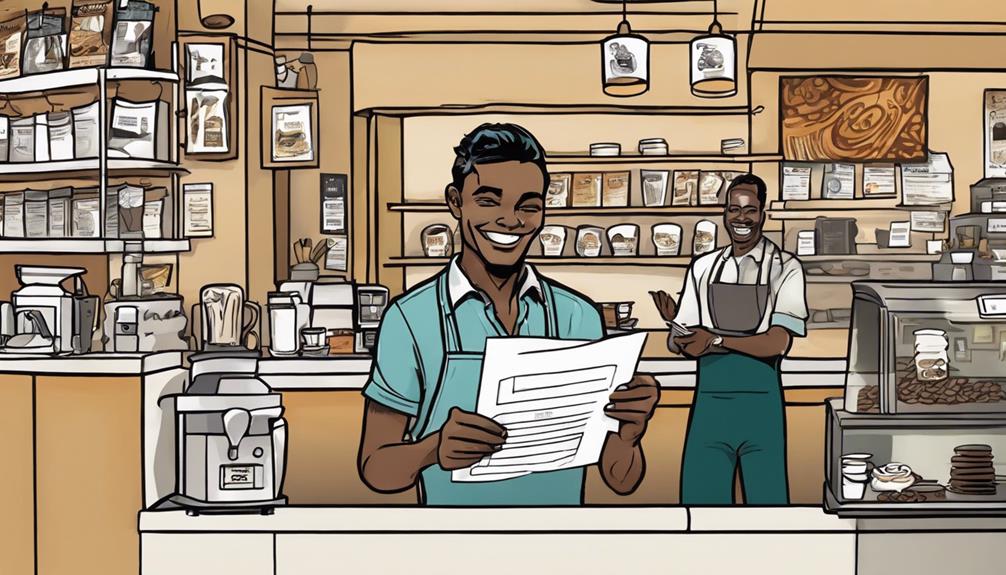Make a healthier cup of coffee without sugar by sweetening it with stevia, monk fruit, raw honey, maple syrup, or coconut oil as natural sweeteners. Mix your coffee without guilt for a delicious way to start your day. Indulge in the tasty blend without extra sugar that is better for your health.
Key Takeaways
- Use natural sweeteners like stevia or monk fruit for zero-calorie sweetness.
- Try coconut oil or coconut cream for a creamy, sugar-free coffee.
- Enhance flavor with cinnamon or date paste, a nutrient-dense sweetener.
- Consider using alternatives like xylitol or erythritol for low-calorie options.
- Experiment with foam stability using agar gum for a sugar-free whipped coffee.
Natural Sweeteners for Sugar-Free Coffee
When sweetening your coffee without sugar, contemplate utilizing natural alternatives like stevia, monk fruit, raw honey, maple syrup, and coconut oil.
Among these options, coconut oil stands out as a unique natural sweetener for your morning brew. Not only does coconut oil add a sweet coconut flavor to your coffee, but it also provides quick energy and a feeling of satiety. This makes it a great choice for those looking to enhance the taste of their coffee without refined sugar.
Monk fruit is another excellent natural sweetener to ponder. As a zero-calorie alternative, monk fruit offers a sugar-free option that won't compromise the taste of your coffee. Its sweetness comes from natural compounds called mogrosides, making it a healthier choice for those trying to cut back on sugar consumption.
Incorporating monk fruit into your coffee routine can help you enjoy a sweet cup without the guilt of added sugars.
Stevia: A Sugar Alternative

Consider incorporating stevia as a sugar alternative in your coffee to enjoy a sweet taste without the negative effects of sugar consumption. Derived from the Stevia Rebaudiana plant, stevia is a natural sweetener that's 200-300 times sweeter than sugar, making it an excellent choice for those looking to reduce their sugar intake. With zero calories and no sugar content, stevia is ideal for maintaining a healthier lifestyle without sacrificing sweetness.
Commonly used as a hot liquid sweetener in beverages like coffee, stevia offers a guilt-free way to sweeten your drink. However, there's a debate surrounding stevia's impact on the microbiome due to its slightly bitter taste. Despite this, many people find stevia to be a satisfying sugar alternative that provides the sweetness they crave without the drawbacks of traditional sugar consumption.
Next, we'll explore another low-calorie sweetener, xylitol, for those looking for additional options to sweeten their coffee without sugar.
Xylitol: Low-Calorie Sweetener

Derived from birch trees or corn stalks, xylitol is a low-calorie sweetener with only 1/3 of the calories of sugar. It serves as an excellent sugar substitute, especially for those looking to cut down on their sugar intake. Xylitol has a low glycemic index, making it a favorable option for individuals monitoring their blood sugar levels. However, it should be emphasized that xylitol is toxic to dogs, so it should be kept out of their reach.
To help you understand the benefits of xylitol compared to sugar, take a look at the table below:
| Aspect | Xylitol | Sugar |
|---|---|---|
| Calorie Content | Low-calorie | High-calorie |
| Glycemic Index | Low | High |
| Tooth-Friendly | Yes | No |
Incorporating xylitol into your coffee can provide a sweet taste without the guilt of excessive calories. Remember to enjoy your xylitol-sweetened coffee responsibly, particularly if you have furry friends around.
Sweetening Coffee With Coconut Cream

You can elevate your coffee experience by sweetening it with coconut cream, which brings natural sweetness and a creamy texture to your cup.
Not only does coconut cream offer a healthier alternative to sugar, but it also adds a tropical twist to your daily brew.
Coconut Cream Benefits
Sweeten your coffee naturally and add a touch of creaminess by incorporating coconut cream, a dairy-free alternative that enhances the flavor without the need for sugar.
Coconut cream not only adds natural sweetness but also provides a creamy texture to your coffee, making it a delicious alternative to traditional sweeteners.
This dairy-free option is perfect for individuals with lactose intolerance or those following a vegan diet.
By using coconut cream in your coffee, you can enjoy a healthier way to sweeten your beverage without the addition of extra sugars.
Additionally, this natural sweetener pairs well with warm spices like cinnamon, offering a flavorful and aromatic coffee experience.
Embrace the benefits of coconut cream as a dairy-free, natural sweetener that not only elevates the taste of your coffee but also caters to various dietary preferences.
Coconut Cream Usage
Enhance your coffee with a velvety and naturally sweet touch by incorporating coconut cream as a dairy-free alternative to traditional sweeteners.
Add a touch of indulgence to your coffee without the need for sugar by blending in coconut cream. This creamy addition not only enhances the flavor of your brew but also provides a rich and velvety texture that complements the bold notes of your coffee perfectly.
The subtle coconut taste of the cream harmonizes well with various coffee types, elevating your overall coffee-drinking experience. Whether you prefer a strong espresso or a smooth latte, coconut cream can be the perfect companion to create a delicious and healthier cup of coffee.
Enjoy the richness and depth that coconut cream brings without the added sugars commonly found in traditional sweeteners. Make your daily coffee routine a delightful treat by exploring the wonders of coconut cream as a sweetening alternative.
Dates for Coffee Sweetening
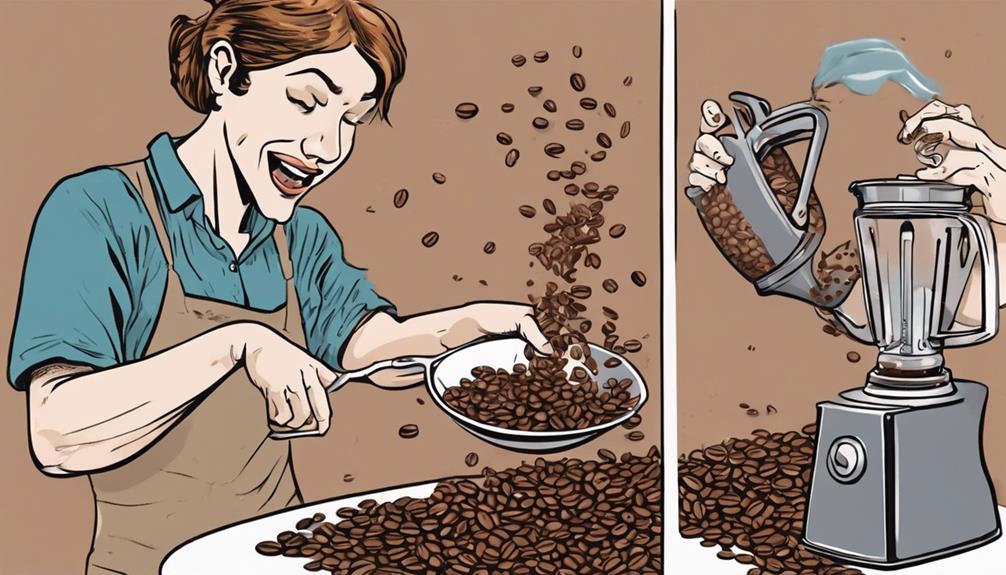
Dates are a nutrient-packed option for sweetening your coffee naturally.
By using date paste, you can add sweetness without the sugar spike.
Incorporating dates in your coffee offers a healthier way to enjoy a sweet cup of Joe.
Date Paste Sweetness
When it comes to sweetening your coffee without sugar, consider turning to date paste as a nutritious and flavorful alternative. Date paste sweetness offers a healthier way to enjoy a cup of coffee, providing a natural source of sweetness along with essential nutrients.
This sweetening option is rich in fiber, iron, magnesium, and calcium, making it a wholesome choice for those seeking to reduce their sugar intake.
To incorporate date paste into your coffee, simply blend dates with water until smooth to create a versatile and sweet ingredient. Adding date paste to your coffee not only enhances the flavor profile but also introduces a natural sweetness that complements the beverage perfectly.
Nutrient-Rich Alternative
Consider incorporating nutrient-rich dates as a healthier alternative for sweetening your coffee. Dates offer more than just sweetness; they're packed with fiber, iron, magnesium, and calcium.
By using date paste as a natural sweetener in your coffee, you not only enhance the flavor but also introduce essential nutrients to your daily brew.
Date paste is a simple and wholesome way to sweeten your coffee without resorting to refined sugar. This nutrient-rich alternative provides a natural sweetness that can elevate the complexity of your drink without any of the negative effects associated with processed sugars.
Additionally, incorporating dates into your coffee routine can add a layer of richness and depth to your cup, enhancing the overall drinking experience.
Embrace the versatility of dates as a sweetening option in your beverages and recipes. Whether you opt for date paste or whole dates, you can enjoy the nutritional benefits they bring while indulging in a naturally sweetened coffee experience.
Healthier Coffee Sweetening
Enhance your coffee with a healthier twist by sweetening it with date paste, a nutrient-rich alternative to sugar. Dates not only add natural sweetness but also bring a host of health benefits to your cup of coffee. They are packed with fiber, iron, magnesium, and calcium, making them a great choice for those looking to detox from refined sugar.
To help you understand the benefits of using date paste for sweetening your coffee, here is a breakdown in the table below:
| Benefits of Using Date Paste for Coffee Sweetening |
|---|
| 1. Natural sweetness without refined sugar |
| 2. Added fiber for digestive health |
| 3. Rich in iron, magnesium, and calcium |
| 4. Nutrient-dense alternative to sugar |
| 5. Ideal for those on a sugar detox journey |
Foam Stability in Whipped Coffee
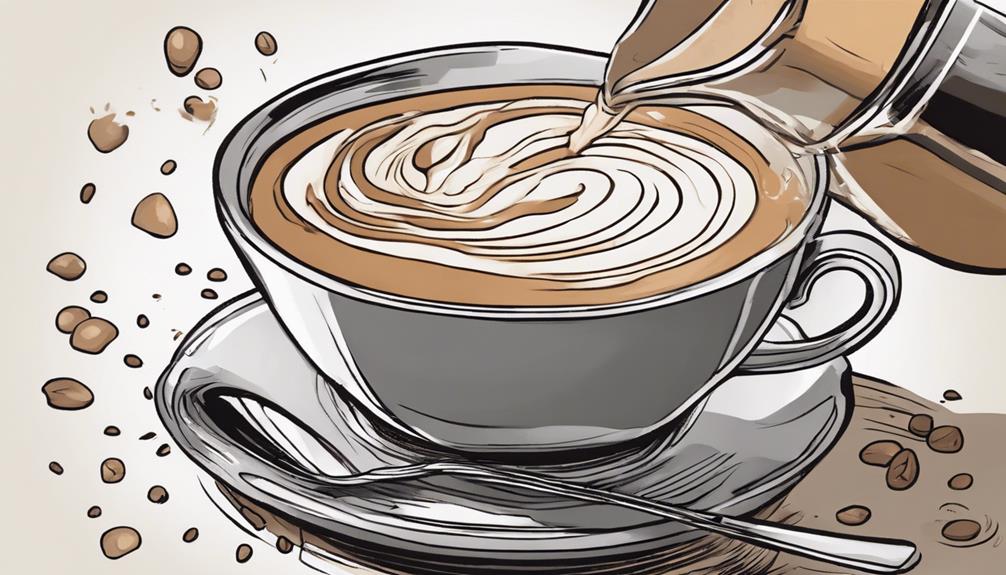
Foam stability in whipped coffee is necessary for achieving the desired texture and presentation of the beverage.
Sugar plays a pivotal role in stabilizing and creating foam in whipped coffee. When searching for sugar alternatives, it's important to take into account their impact on foam stability.
Substituting sugar with ingredients like cocoa powder or vanilla extract can potentially compromise the foam structure. However, incorporating stabilizers like agar gum can help enhance foam stability in whipped coffee without using sugar.
To maintain both flavor and texture while reducing sugar dependency, a combination of instant coffee and suitable substitutes can be a great solution.
Additionally, minimal amounts of sugar or condensed milk can also contribute to the desired flavor profile and texture in whipped coffee.
Experimenting with different sugar alternatives while keeping foam stability in mind can help you achieve a delicious and visually appealing whipped coffee experience.
Sugar Substitutes in Whipped Coffee
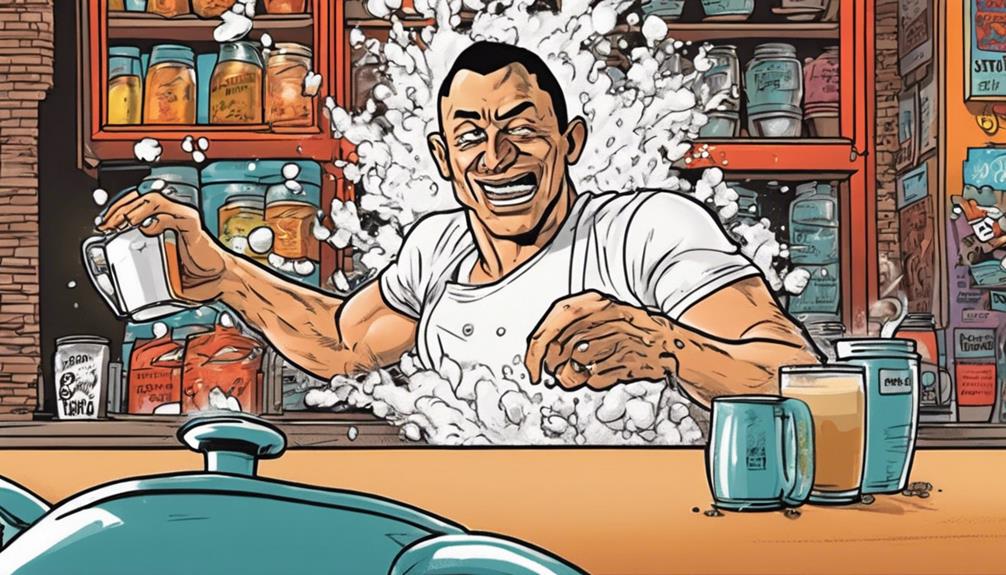
Sugar substitutes like stevia, xylitol, monk fruit, and erythritol offer a low-calorie alternative to sugar in whipped coffee recipes. When creating that perfect whipped cream topping for your coffee, consider using one of these sugar substitutes:
- Stevia: Derived from the Stevia Rebaudiana plant, stevia has zero calories and is commonly used as a hot liquid sweetener. It provides sweetness without the guilt of added calories.
- Xylitol: With only 1/3 of the calories of sugar, xylitol is derived from birch trees or corn stalks and has a low glycemic index. It can help you achieve the desired sweetness without the spike in blood sugar levels.
- Monk Fruit: Sourced from China, monk fruit contains zero calories, high mogrosides, and tastes similar to white sugar. It's a popular choice for those looking to cut down on sugar intake while still enjoying a sweet treat.
Alternatives to Sugar in Coffee
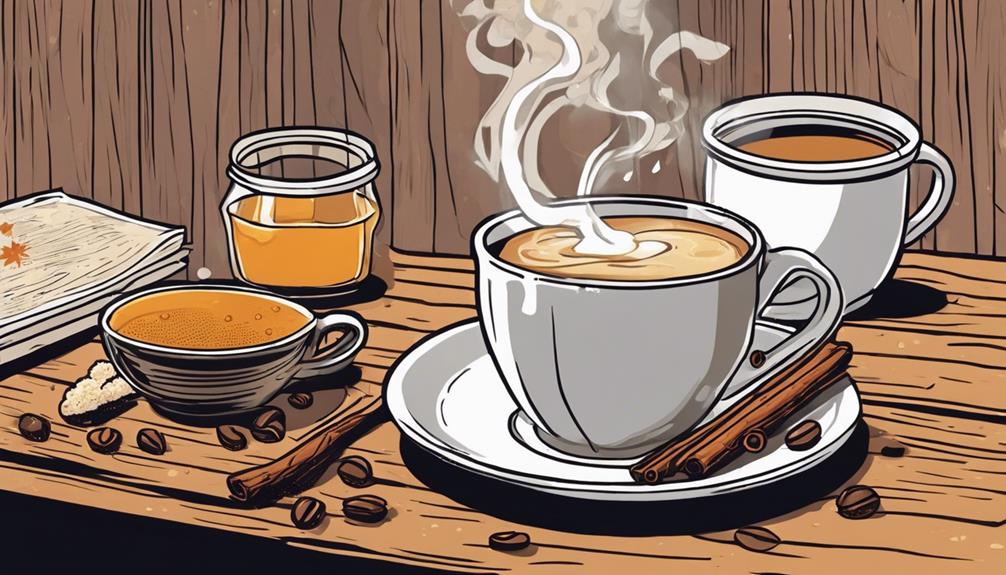
Looking to sweeten your coffee without sugar? There are several alternatives to sugar that can enhance your coffee's flavor without the added calories. Stevia, a zero-calorie sweetener derived from Stevia Rebaudiana leaves, is a popular choice. It provides sweetness without the sugar content.
Another option is Monk fruit, a zero-calorie sweetener from China that's high in mogrosides and antioxidants, making it an excellent choice for those trying to avoid refined sugar.
If you prefer a creamier texture, consider using coconut milk or coconut cream to sweeten your coffee naturally. Not only will it add a subtle coconut flavor, but it also offers a creamy consistency that complements the coffee well.
Date paste, made from dates, is another natural sweetener that not only adds sweetness but also provides fiber, iron, magnesium, and calcium, giving your coffee an extra health boost.
Experiment with these alternatives to find the perfect sweetener for your daily cup of coffee!
Sweetening Coffee With Flavor Enhancers
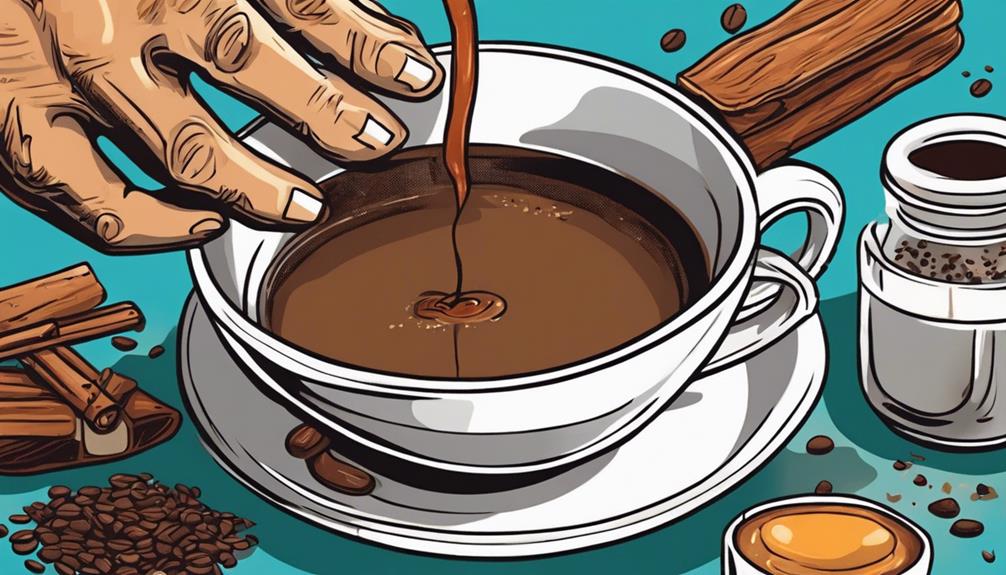
Enhance the flavor of your coffee by incorporating natural sweeteners and flavor enhancers like cinnamon, coconut cream, and date paste.
Cinnamon:
Add to coffee grounds for a flavorful kick and potential anti-inflammatory benefits.
Coconut Cream:
Provides a rich, creamy texture and a subtle coconut taste while sweetening your coffee.
Date Paste:
A natural alternative to sugar, date paste not only sweetens but also offers fiber, iron, magnesium, and calcium.
These flavor enhancers offer a healthier way to sweeten your coffee without relying on sugar.
Cinnamon infuses a warm and spicy note, coconut cream adds a luxurious creaminess, and date paste brings a natural sweetness packed with nutrients.
Experiment with these options to tailor your coffee to your taste preferences and enjoy a guilt-free indulgence in every sip.
Frequently Asked Questions
How to Make Healthy Coffee Without Sugar?
To make healthy coffee without sugar, use sugar-free sweeteners like stevia or monk fruit. Add coconut cream or vanilla extract for flavor. Try spices like cinnamon or nutmeg. Use cacao powder for a chocolatey taste. Consider grass-fed butter or coconut oil for creaminess.
What's the Healthiest Way to Sweeten Coffee?
To sweeten your coffee healthily, try natural sweeteners like stevia, monk fruit, or raw honey. Avoiding refined sugars can lower the coffee's glycemic index. Opt for maple syrup for added vitamins and minerals. Enhance flavor with vanilla extract, cinnamon, or cacao powder.
What Is the Healthiest Substitute Sugar for Coffee?
For a healthier cup of coffee, the best sugar substitute is stevia, monk fruit extract, maple syrup, raw honey, or flavor enhancers like coconut oil, grass-fed butter, vanilla extract, cinnamon, nutmeg, or cacao powder. Enjoy your guilt-free brew!
How Do You Make Coffee Taste Better Without Sugar and Creamer?
To make your coffee taste better without sugar and creamer, try enhancing it with natural sweeteners like monk fruit or stevia. Experiment with ingredients like grass-fed butter, vanilla extract, warm spices, or cacao powder for a healthier and tastier cup.
Conclusion
So next time you reach for that cup of coffee, remember these sweet-free alternatives to sugar. Your taste buds will thank you for the healthier choice, and you'll enjoy a delicious cup of coffee without the added guilt.
Experiment with different natural sweeteners and flavor enhancers to find the perfect blend that suits your taste. Cheers to a sweeter, sugar-free coffee experience! You can also enhance the flavor of your sugar-free coffee by blending different coffee roasts. Experiment with a mix of light, medium, and dark roasts to create a complex and unique flavor profile. By combining different roasts, you can add depth and richness to your coffee without the need for added sweeteners. Cheers to discovering the perfect blend of natural sweetness and coffee roasts for a delightful morning pick-me-up!
